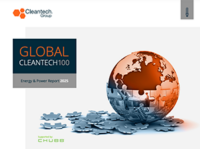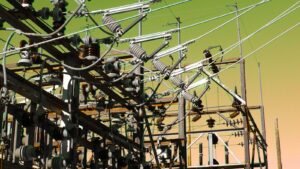Intelligent HVAC in a Warming World
As global temperatures become increasingly volatile, more and more of the worldwide population is exposed to extreme, potentially deadly heat. The summer of 2022 saw thousands of heat-related deaths and record-high temperatures across the world. Projections suggest that by 2100, between 50% and 75% of the global population will be exposed to lethal heat waves at least several weeks per year.
Global demand for air conditioning and cooling has soared in response to extreme weather, and skyrocketing energy prices are driving building managers and owners to seek energy cost-saving solutions. Aside from energy costs, the reduction of building-related energy and emissions is a key factor in reaching global decarbonization targets as buildings account for upwards of 30% of global energy use and 15% of CO2 emissions.
Intelligent HVAC has emerged as a solution for property managers and owners to reduce the cost of building operations as well as for companies hoping to meet net zero targets to reduce energy consumption and emissions. As HVAC accounts for roughly 35% of building energy use across building types, optimizing HVAC is the low-hanging fruit to efficiently reduce energy consumption and costs. Although local and national building performance standards and energy efficiency regulations are becoming gradually more demanding, the significant energy savings proffered by HVAC optimization is the key demand driver.
Intelligent HVAC Technologies
Intelligent HVAC includes software for building management systems (BMS) optimization, autonomous data collection, connectivity hardware, and smart components to optimize HVAC. HVAC optimization has evolved from the installation of hardware to monitor and control individual devices such as heaters, boilers, and refrigeration units, to solutions to optimize existing building infrastructure and leverage AI, machine learning, and a digital twin to achieve full-building automation and orchestration.
Innovators are regularly offering energy savings of 20%, while some promise up to 60% savings. Several of the main categories of intelligent HVAC technologies include:
- HVAC Connectivity: Software and hardware that connect to a cloud system for whole-building connection and optimization (making “dumb” devices “smart”). An example is 75F, who offers an IoT-based HVAC control solution that allows for per room individual temperature control while saving up to 40% in energy costs. An Android-based controller plus a combination of wireless sensors and patented dampers cuts installation labor by 80% over traditional zone control systems with a 3-year payback.
- Software as a Service (SaaS):
- Digital Twin: A digital twin is a real-time virtual representation of a real-world physical process that serves as the indistinguishable digital counterpart of it for practical purposes, such as system simulation, integration, testing, monitoring, and maintenance.
Here, the digital profile of a building is optimized using a large data model either gathering data points from a specific building site (e.g., DABBEL, a developer of an AI-driven software solution to reduce HVAC energy consumption for buildings) or from a database of similar models (e.g., Arloid, a provider of automatic control software for HVAC devices based on changing environmental conditions and comfort in real-time).
- Digital Twin: A digital twin is a real-time virtual representation of a real-world physical process that serves as the indistinguishable digital counterpart of it for practical purposes, such as system simulation, integration, testing, monitoring, and maintenance.
- Tenant-in-the-Loop Optimization: In this area, cloud platforms incorporate tenant feedback into the data model to optimize HVAC performance and thermal comfort. Cohesion is a provider of an IoT- and AI-enabled platform to help commercial real estate operators integrate their building’s systems.
- Priority Asset Management: This is proprietary software that commands/controls a specific component or group of components. Brainbox AI, for example, uses predictive and self-adapting AI to optimize buildings, one of the world’s largest polluters. By bringing autonomous AI to the built environment, an existing HVAC system becomes a predictive brain that learns precisely how to use less energy to optimize comfort in all zones, at all times.
- Smart Components: Smart components that allow for optimization, networking, and automation at the constituent component level are driving the evolution of the HVAC market, as well as disrupting wider markets beyond buildings and the built environment. Turntide Technologies, for example, is expanding from smart motors for HVAC systems into agriculture systems and electric vehicles.
All in all, innovators are now providing a combination of software and hardware solutions for buildings both with and without existing BMS for up to a 50% energy savings. Full building orchestration and automation is the “today” of HVAC efficiency versus “yesterday” of monitoring/control of individual devices. “Tomorrow” will likely be smart underlying components that swap out the high energy usage components and are the HVAC “brain” of networking, control, automation, hollowing out energy use and even offering value-added service layers from there.



